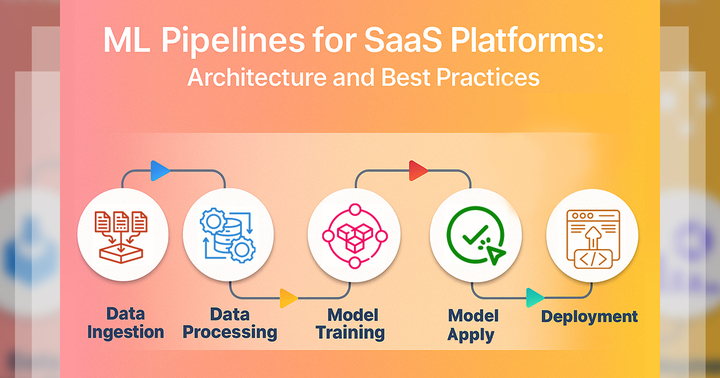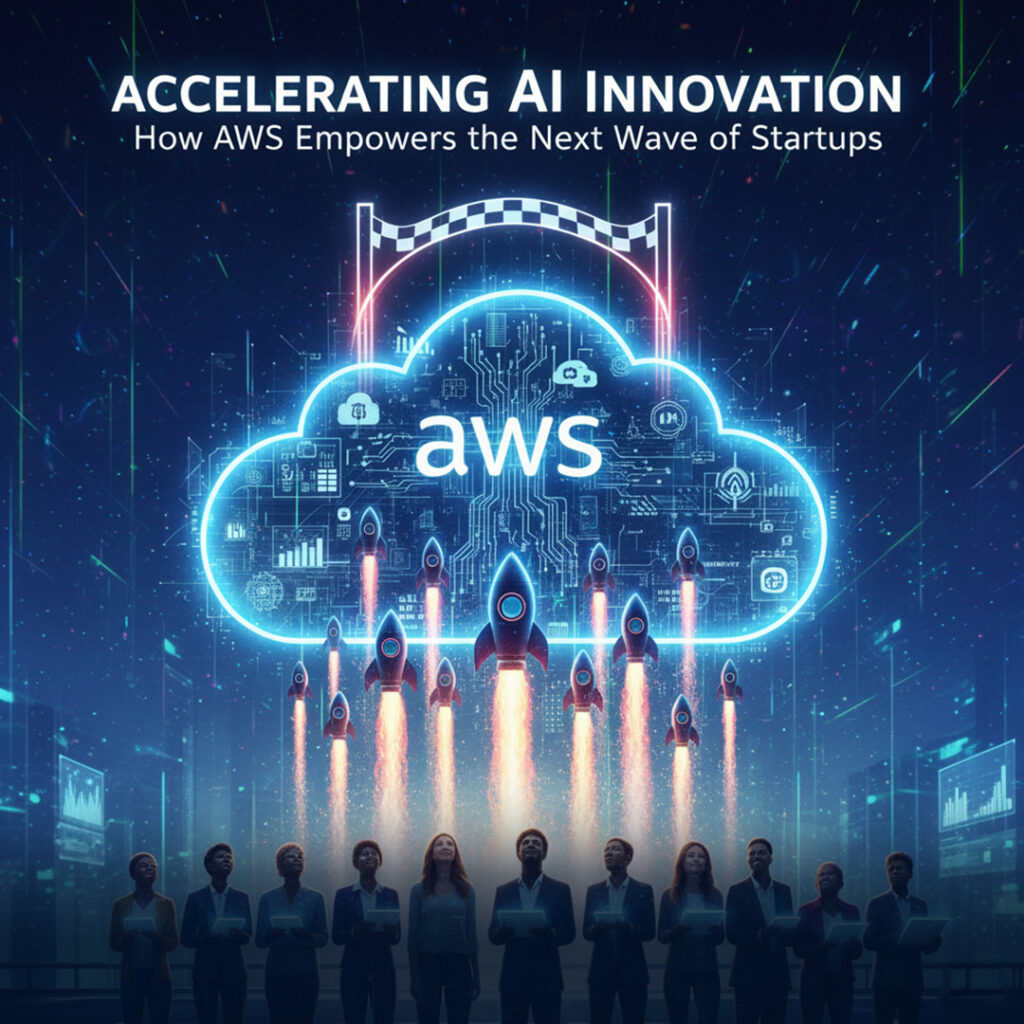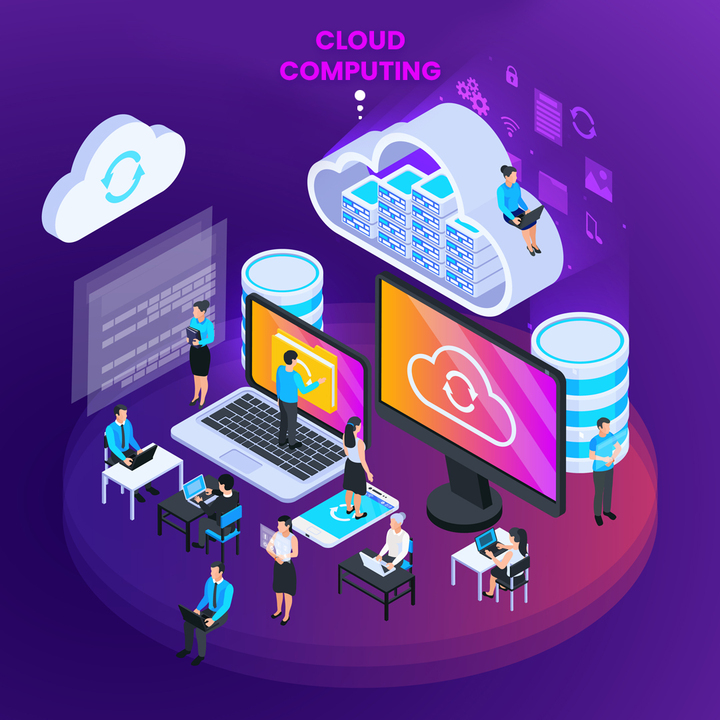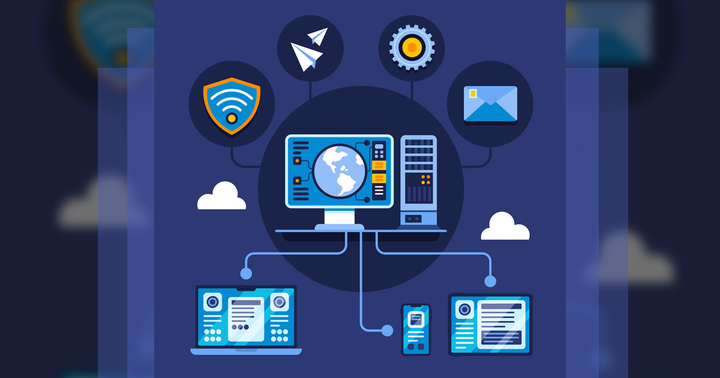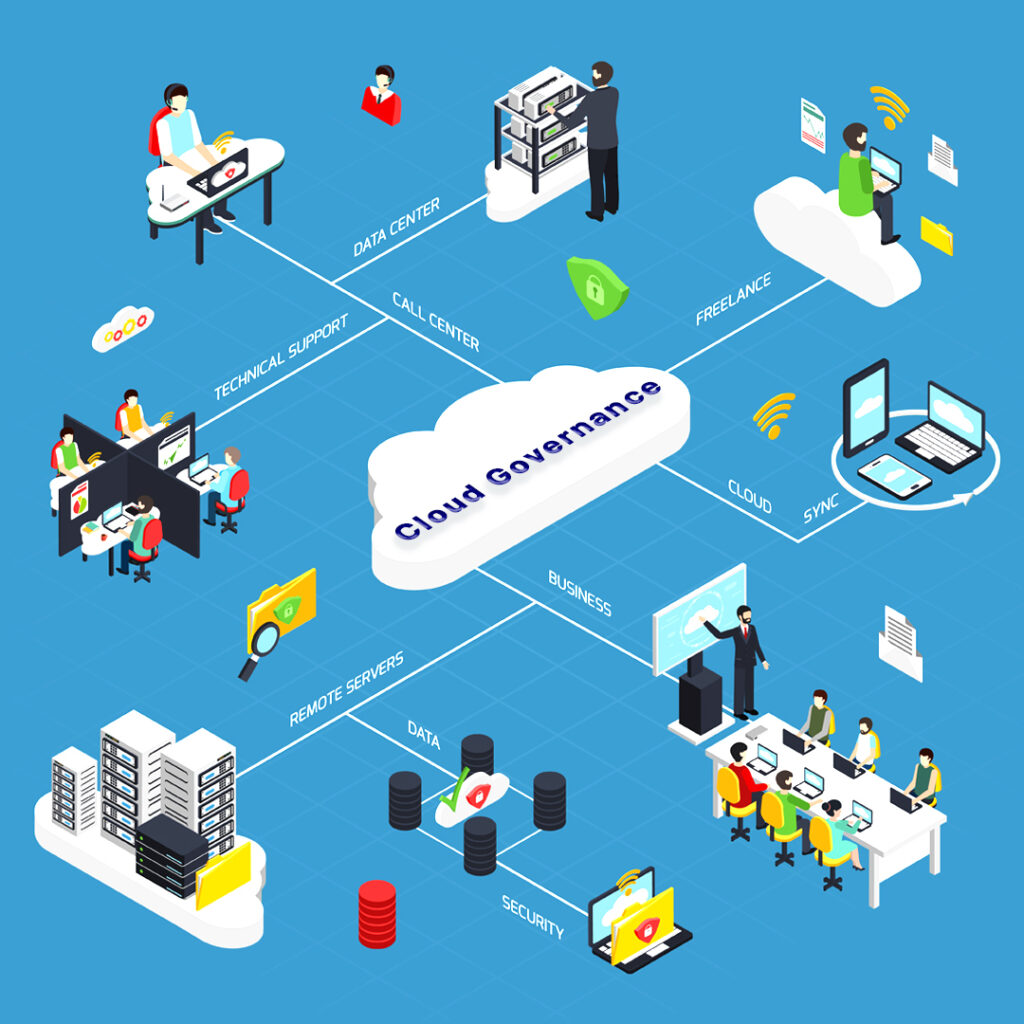In today’s fast-paced digital landscape, you face immense pressure to innovate rapidly, impress early users, and capture investor attention—all while building something that truly works. That’s where the concept of a Minimum Viable Product (MVP) comes in. But what if you could supercharge your MVP with a technology that delivers real-time data, enables automation, and makes your product instantly stand out? Enter the Internet of Things (IoT).
Once seen as the domain of enterprise giants or high-end gadgets, IoT is now a game-changing tool for IT startups like yours. When used strategically, it helps you access new markets, enhance user experience, and validate ideas with real-world insights—right from Day 1.
In this blog, you’ll discover why you should treat IoT as a core part of your MVP strategy, supported by practical advice, real case studies, and a clear roadmap to get you started.
1. What Is an MVP (Minimum Viable Product)?
- Before you explore IoT, it’s important to know what an MVP (Minimum Viable Product) is. An MVP is a basic version of a product that includes only the most important features. You create it to test your idea quickly and share it with early users. Their feedback helps you understand what works and what needs improvement. An MVP isn’t just a rough prototype, and it’s not a fully finished product either. It’s something in between—good enough to use, but still in progress. This way, you can save time, reduce risk, and build a better final product.
1.1 Core Characteristics of an MVP:
a. Solves a core problem
- Your MVP should focus on solving one main problem your users face. Instead of adding many features, you build only what’s needed to fix the core issue. This makes your product useful from the start. By focusing on a real problem, you make sure people actually want to use your solution. If you try to solve everything at once, you’ll waste time and effort. Keep it simple, clear, and focused on that one big problem.
b. Quick to build
- An MVP doesn’t take months or years to finish. You build it quickly so you can test your idea as soon as possible. The goal is to launch a working version in a short time, not a perfect one. You skip the extra features and focus only on what’s needed. By building it fast, you get feedback faster and improve it based on real user needs. This saves time and helps you move smarter, not slower.
c. Collects user feedback
- The main job of your MVP is to get feedback from real users. After using it, people will tell you what they like, what’s confusing, or what’s missing. This helps you learn what to improve next. You don’t have to guess—you get real answers. Their opinions shape how your product grows. Without this feedback, you might build something no one needs. So your MVP must let you listen, learn, and change based on what users actually want.
d. Low initial development cost
- Since an MVP has only the basic features, it doesn’t cost a lot to make. You don’t spend huge amounts of money building something perfect right away. Instead, you save money by making a simple version first. This lowers your risk and lets you test the idea before putting in more resources. If the idea doesn’t work, you haven’t wasted much. If it does, you can improve it later. It’s a smart and safe way to start.
- MVPs help you check if your idea really fits what people want—this is called product-market fit. Instead of spending months or years building the full product, you test a simple version first. That way, you don’t waste time or money. It helps you learn quickly, improve rapidly, and determine if your idea is truly worth building.
2. Why IoT Matters in Today’s Digital Ecosystem
2.1 What Is IoT?
- IoT (Internet of Things) means connecting physical devices like cars, sensors, or home appliances to the internet. These devices can collect, send, and sometimes even receive data. You can control them remotely or let them work automatically. For example, a smartwatch tracks your steps and sends the data to your phone. With IoT, your devices become smarter by talking to each other and helping you do things faster, easier, and more efficiently.
2.2 Current IoT Market Stats:
- Right now, there are over 15 billion IoT devices connected around the world (Statista, 2025). That means billions of things—like smartphones, watches, cars, and even farm tools—are sharing data through the internet. The IoT market is growing fast and is expected to reach $1.6 trillion by 2028. You can find IoT everywhere—from healthcare and farming to retail stores, smart cities, and factories. This shows how powerful IoT has become. As you explore this field, you’ll see how it helps improve efficiency, safety, and everyday life in amazing ways.
- For startups like yours, this fast IoT growth is a big chance to create something new and exciting. If you add IoT during your MVP development, you can test smart ideas early and stand out in the market. It helps you innovate quickly and build products that are more useful, connected, and ready for the future.
3. The Intersection of IoT and MVP Strategy
- So, how do IoT and MVP work together? Your MVP helps test if your product idea is useful. When you add IoT, you get real-time data from the physical world, like sensors or smart devices. This makes your MVP smarter and more interactive. Instead of guessing what users want, you can see how they actually use your product. IoT turns your simple MVP into a solution that responds to users in real time. This gives you better feedback, helps you make faster changes, and builds a more powerful and real-world-ready product right from the start.
3.1 Here’s why startups should consider combining the two:
a. Faster feedback loops from real-world interactions
- When you mix IoT with your MVP, you get real-time feedback on how people actually use your product. Devices like sensors or trackers give you instant data. This helps you fix problems or improve features faster. You don’t have to wait weeks for user surveys—you see what’s happening right now. This fast feedback loop helps you make smarter updates quickly and keeps your product moving in the right direction from the very beginning.
b. Predictive capabilities powered by sensor data
- With IoT sensors, your product can do more than react—it can predict what users might need next. For example, a smart fridge could tell when food is running low. By using this sensor data, your product becomes smarter and more helpful. You can plan ahead, offer useful tips, and solve problems before they even happen. This makes your MVP not just responsive but intelligent, giving users a smoother, more predictive experience.
c. Competitive advantage with smarter products
- Combining IoT with your MVP gives you a strong competitive edge. While others may be testing basic ideas, your product can actually collect data, respond to users, and work smarter. That means you’re offering something more advanced from the start. It helps your startup stand out and attract attention. A smart product shows you’re thinking ahead, which can impress both investors and users. It’s a great way to stay ahead of the competition.
d. Improved UX through automation and personalization
- IoT lets your product adjust to users automatically. It can learn from data and personalize the experience just for them. For example, a smart home system could turn off lights when you leave. This kind of automation makes the product easy and fun to use. It also improves UX (User Experience) by making things faster and more convenient. When your MVP includes this, users feel like it’s built just for them—and that builds loyalty.
- Whether you’re building a health-tech wearable, a smart logistics system, or an energy dashboard, using IoT from Day 1 adds real value. It helps your product collect live data, respond to real-world situations, and give users a better experience. Starting with IoT makes your solution smarter, more useful, and ready to solve problems from the very beginning.
4. Key Benefits of Integrating IoT into an MVP
4.1 Access to Real-World Data Early
- When you use IoT in your MVP, you start getting real-world data right away. You can see how users behave, how the environment changes, and how often your product is used. This real-time data helps you make better decisions early on. You don’t have to guess—you’ll know exactly what’s working. This helps you improve your product faster and smarter, giving you a big advantage right from the start.
4.2 Enhanced Product Testing and Validation
- With IoT, you don’t have to rely only on surveys or app clicks to test your MVP. Instead, you can watch how people actually use your connected device in real life. You get real actions, not just opinions. This helps you validate your product better and fix real problems quickly. It’s like testing your idea in the real world, which gives you more accurate feedback and leads to a better final product.
4.3 Higher Engagement Through Interactivity
- IoT devices make your product more interactive and fun to use. Instead of just tapping on a screen, users can use voice commands, motion sensors, or proximity triggers. That means your MVP responds in new ways, making people feel more connected to it. This kind of engagement keeps users interested and makes your product stand out. The more interactive it feels, the more likely users will keep coming back to use it.
4.4 Foundation for Scalable Architecture
- When you build your MVP with IoT from the beginning, you can plan for the future. You’ll need a scalable backend that can grow with your product. That way, it’s ready for advanced features like AI, edge computing, or smart automation later on. This saves you time later and helps you avoid starting over. Building this foundation early makes your product stronger, more flexible, and future-ready from Day 1.
4.5 Increased Investor Interest
- Investors love products that stand out. When your MVP includes IoT, it shows you’re serious about innovation and ready for the market. It proves your idea works in the real world and isn’t just a concept. This kind of technical depth gets attention from VCs and increases your chance of getting funding. A working IoT MVP shows you’re thinking ahead, which gives you a big edge over other startups.
5. Real-World Examples of IoT in MVPs
5.1 Smart Healthcare: Oura Ring
- The Oura Ring didn’t start as a big wellness brand. In the beginning, they made a simple MVP that focused only on sleep tracking using basic IoT sensors. This early version helped them test how well it worked and if people liked it. They used this real data to improve the product later. It shows how starting small with an IoT MVP can help you check accuracy, gather feedback, and build something people actually want.
5.2 Logistics Optimization: Tive
- Tive launched with an IoT MVP to help companies track the temperature and location of their shipments. Their smart devices sent real-time data during transport, helping prevent spoilage and loss. This simple, focused MVP proved useful right away and helped them show they were solving a real problem. By using IoT early, Tive proved product-market fit in just weeks. It’s a great example of how your MVP can deliver real value even before full development.
5.3 Smart Home: Wyze Labs
- Wyze Labs entered the market with a simple $20 smart camera as their IoT MVP. It had just the essential features, was connected to the cloud, and worked well right out of the box. It didn’t cost much, but it delivered real value. People trusted it quickly because it was affordable, smart, and easy to use. Wyze proved that even a low-cost MVP with IoT features can grab attention and build a strong user base.
6. Step-by-Step Guide: How Startups Can Incorporate IoT in MVP Development
Step 1: Define the Problem & IoT Use Case
- Start by asking yourself two big questions: What problem are you trying to solve? And how can a connected device help make that easier or even automatic? Thinking this way helps you plan a smart IoT MVP that actually solves something real and gives users real value.
Example:
- Suppose you’re trying to solve the problem of indoor air quality. Your goal is to help people know if the air inside their home is safe to breathe. You can use a simple IoT sensor that measures CO₂ and humidity levels. This device sends real-time data to a phone app, letting users take quick action. By adding a connected device to your MVP, you make it more helpful, automated, and relevant to everyday life.
Step 2: Choose the Right Hardware
- When picking the right IoT device for your MVP, think about a few important things. First, check the power consumption—your device should run long time without needing a charge. Then look at connectivity options like Wi-Fi, Bluetooth, or LoRa, depending on how and where it will be used. Also, consider the cost and how easy it is to get the hardware. The right choice helps your MVP work smoothly and stay affordable for early testing.
- You can use Raspberry Pi, ESP32, or Arduino to build your IoT MVP quickly. These are small, low-cost hardware boards that help you connect sensors, collect data, and control devices. They’re great for testing your idea without spending too much. If you’re building something smart—like a device that senses temperature or motion—these tools make it easy and fast. You don’t need to be a pro. With some basic coding, you can turn your idea into a working prototype.
Step 3: Build a Cloud-Connected Backend
- You’ll need:
a. Device communication (MQTT/HTTP)
- Your IoT device needs a way to talk to the cloud. You can use MQTT or HTTP, which are communication methods that send data from your device to the internet. Think of it like texting between your sensor and your app. This step makes sure your MVP is always connected and can share real-time info. Without this, your device would work alone and not give users anything useful or up-to-date.
b. Cloud storage (AWS, Azure IoT, GCP)
- All the data your device collects needs a safe place to go. That’s where cloud storage comes in. You can use platforms like AWS, Azure IoT, or Google Cloud (GCP). These services store and manage your data online so you can access it anytime, anywhere. With this, your MVP becomes smarter and more scalable. Cloud storage also makes it easy to analyze or share your data with other apps or users.
c. Basic dashboards or apps for user interaction
- To make your MVP useful, you need a dashboard or an app where users can see and control things. It could show graphs, alerts, or status updates from the IoT device. This makes the product feel interactive and gives users a better experience. Even a simple screen with live data can help you explain your idea clearly. Adding this feature helps users understand, trust, and actually use what you’ve built.
Step 4: Prototype Quickly
- Use rapid prototyping tools:
Blynk, Node-RED, ThingSpeak, or Firebase
- To build your IoT MVP fast, use tools like Blynk, Node-RED, ThingSpeak, or Firebase. These let you connect devices, collect data, and create basic apps without needing deep coding skills. For example, Blynk helps you control devices from your phone, and Node-RED lets you connect actions with simple flows. These tools make rapid prototyping easy, so you can test your idea quickly and get it working without wasting time. You’ll see results faster and learn what to fix.
Mobile apps with Flutter or React Native
- If you want your users to interact with your MVP on their phones, you can build simple apps using Flutter or React Native. These platforms help you create mobile apps that work on both Android and iOS without writing two separate codes. You can add buttons, graphs, or alerts connected to your IoT device. This gives users a smooth experience and lets them control your product in real time. It’s a smart way to make your MVP feel complete and polished.
Step 5: Test with Real Users
- Deploy a small batch, get real-world data, and iterate:
a. Monitor usage
- After building your IoT MVP, test it with a few real users. Watch how they use it—when they turn it on, what features they use most, and what they ignore. This is called monitoring usage. You’ll learn what works and what needs fixing. Seeing your product in action helps you understand real behavior, not just guesses. This step helps you improve your MVP faster and build something that people actually want to use.
b. Collect analytics
- Use tools to collect analytics, which means tracking data like how often your device is used, which buttons are clicked, and when users stop using it. This data gives you clear answers about what’s good and what’s not. You don’t have to rely only on opinions—now you have proof. These insights help you make smart changes to your MVP and show others (like investors) that your idea has real potential and user interest.
c. Fix pain points early
- When real users test your MVP, they’ll find things that don’t work well—these are called pain points. Maybe something is confusing or takes too long to load. The sooner you fix these problems, the better your product becomes. By solving issues early, you avoid bigger problems later. This also shows users that you care about their feedback. A better product means happier users, and that brings you one step closer to success.
Step 6: Plan for Scaling and Security
a. Device provisioning
- Device provisioning means getting your IoT devices ready to connect with your system. When you scale, you might have hundreds of devices, so you need an easy way to add, track, and manage each one. It’s like giving every device a unique ID so it can talk to your cloud safely. Planning this early helps your MVP grow into a full product without confusion or errors when more users start using your solution.
b. Firmware updates
- Your IoT device has something called firmware, which is like its internal software. You’ll need to send updates to fix bugs, add features, or improve performance. Instead of updating each one by hand, you should plan for over-the-air (OTA) updates, where the device updates itself online. This saves time and keeps users safe. Making sure your MVP supports firmware updates early will help you avoid big problems when your user base grows.
c. Data encryption
- Since your IoT MVP collects and sends data, it’s super important to protect that data using encryption. This means turning the data into a secret code so that only trusted systems can read it. Whether it’s user info or sensor readings, keeping data safe builds trust. Planning for security from the start protects your users and helps your MVP meet industry standards. Without encryption, your product could be vulnerable to hackers or data leaks.
- Even your MVP needs some basic security features to earn users’ trust. If people know their data is safe, they’re more likely to use your product. Adding simple things like encryption and secure logins shows you care about privacy. Starting with security early helps you avoid big problems later and makes your MVP look more professional.
6. Common Pitfalls and How to Avoid Them
6.1 Overengineering the MVP
- A lot of startups make the mistake of overengineering their MVP by adding too many IoT features right away. Don’t do that. You should focus on just 1–2 core features that solve the main problem. Keeping it simple helps you build faster, test easier, and avoid wasting time and money on things users might not even need.
Solution:
- To avoid overcomplicating your MVP, start with only the essential sensors and basic interactions. Focus on the features that really solve the main problem. For example, if you’re building a smart air monitor, use just one sensor for CO₂ or humidity instead of five. Keep the user experience simple, like sending alerts or showing data in a basic app. This makes your MVP easier to build, test, and improve based on real user feedback.
6.2 Ignoring Power and Connectivity Constraints
- When building your IoT MVP, don’t forget about power and connectivity problems. In the real world, your device might run out of battery fast or lose its network signal. If you ignore these issues, your product could stop working when people need it most. Always plan for low power use and stable connections from the start.
Solution:
- To fix power and network problems in your IoT MVP, you should design for low-power usage and add offline sync features. This means your device uses less battery and can still collect data even without internet. When the connection comes back, it can sync everything to the cloud. This makes your product more reliable and works better in real-world situations. Planning for these issues early saves time and keeps your users happy and connected.
6.3 Poor Data Management
- If you collect too much data in your IoT MVP without a clear plan, you’ll get stuck in analysis paralysis. That means you’ll have tons of numbers but won’t know what to do with them. It becomes hard to find what’s actually useful. Instead of helping you, the data just confuses you and slows down your progress.
Solution:
- To avoid data overload in your IoT MVP, start by choosing a few key metrics that really matter for your product. Ask yourself what data will help you improve or explain your idea. Then, store only what you need. This keeps your system simple, saves storage space, and makes it easier to understand results. By focusing on the right data from the beginning, you’ll make smarter decisions and avoid wasting time sorting through useless information.
6.4 No OTA Update Plan
- If you send out your IoT MVP without a way to do OTA (Over-the-Air) updates, you’re taking a big risk. What if there’s a bug or you need to add a new feature later? Without OTA, you can’t fix it easily. Users will get stuck with old versions, and your product may feel outdated or broken.
Solution:
- To keep your IoT MVP up-to-date, use frameworks that support over-the-air (OTA) updates. This means you can send bug fixes, new features, or security patches to your device without touching it physically. It saves time and keeps your users happy. Tools like ESP32, Firebase, or cloud platforms often have OTA options. Planning for this from the start makes your product more flexible, safe, and ready to grow as you improve your idea.
7. Future Trends: What’s Next for IoT and MVPs
7.1 Edge Computing in MVPs
- You can now process IoT data directly on your device using edge computing. That means your MVP doesn’t have to send every piece of data to the cloud, which saves time and reduces delay. It also helps when the internet is weak. This makes your product faster, more efficient, and better for users. Using edge computing early shows that you’re thinking smart, especially when building an MVP that needs to react in real time.
7.2 AI + IoT = Smart MVPs
- By using AI with your IoT MVP, your device can actually learn from users and predict what they need. For example, a smart light might turn on before you even ask. This is called edge AI, where the device uses simple intelligence right on the spot. It makes your MVP feel smart and personalized, which users love. Combining AI and IoT adds real value and makes your product stand out early in the market.
7.3 Secure-by-Design MVPs
- Security matters—even in your MVP. If you design your IoT product with encryption and privacy from the start, it shows you care about users’ data. This approach is called secure-by-design, and it’s a big deal for investors. They want to support startups that think ahead. Adding basic security from Day 1 builds trust, avoids future risks, and gives your MVP a more professional and serious image.
7.4 Sustainable IoT
- If you use low-power devices, solar charging, or recyclable materials in your IoT MVP, you’re building something that’s good for the planet. That matters a lot today. People—and even investors—look for eco-friendly products. When you think about sustainability early, you attract users who care about the environment. Plus, it shows you’re a smart, responsible innovator. Making your MVP green gives you an edge in a very competitive space.
Conclusion
- IoT is far more than a modern tech trend—it is a powerful catalyst for innovation, especially when embedded into your MVP strategy. By embracing IoT, you gain the ability to create smarter, data-driven solutions, deliver real-time insights, and validate your product-market fit more rapidly. This not only enhances your user experience but also sets you apart from competitors and attracts the attention of investors. However, to truly succeed, you must follow a lean, focused approach—choosing the right hardware, building secure systems, and maintaining attention to scalability and sustainability.
- In short, if you’re an IT startup determined to reshape your niche, integrating IoT into your MVP might be the secret ingredient that transforms your vision into reality. It’s not about building more; it’s about building smart. Now is your chance to make your MVP not just viable—but truly remarkable.
FAQs
Q1: Is IoT too expensive for MVP development?
- A: Not really. You don’t have to spend a lot. Thanks to open-source platforms and cheap microcontrollers like Arduino or ESP32, you can build a basic IoT MVP without breaking the bank. These tools are easy to use and very cost-effective. If you focus on just the core features, you can create something smart and affordable. So, IoT can actually be budget-friendly if you make smart choices and start simple.
Q2: What industries benefit the most from IoT MVPs?
- A: You can apply IoT MVPs in many fields. Industries like healthcare, logistics, agriculture, energy, and smart homes use IoT to improve performance and solve real problems. For example, farmers use sensors for soil monitoring, and doctors use wearables to track patient health. If your startup works in one of these areas, IoT gives you a big chance to innovate faster and deliver something useful right from the beginning.
Q3: Do I need hardware engineers for an IoT MVP?
- A: Not really. You don’t have to spend a lot. Thanks to open-source platforms and cheap microcontrollers like Arduino or ESP32, you can build a basic IoT MVP without breaking the bank. These tools are easy to use and very cost-effective. If you focus on just the core features, you can create something smart and affordable. So, IoT can actually be budget-friendly if you make smart choices and start simple.
Q4: What is the biggest challenge when building IoT MVPs?
- A: The biggest issues are usually connectivity and data handling. If your IoT device is in a remote area, it might not always have good network access. Also, collecting too much data can make things messy if you don’t know how to organize and analyze it. You need to plan how your MVP will stay connected, manage data efficiently, and still perform well as more people use it.
Q5: Can IoT MVPs be built in a no-code/low-code way?
- A: Yes, definitely. Tools like Blynk, Ubidots, and Node-RED let you create IoT MVPs without writing a lot of code. These platforms use drag-and-drop interfaces so you can build dashboards, set up logic, and connect sensors easily. It’s perfect if you’re not a developer or want to test your idea quickly. So even with little coding knowledge, you can still bring your smart product idea to life.


